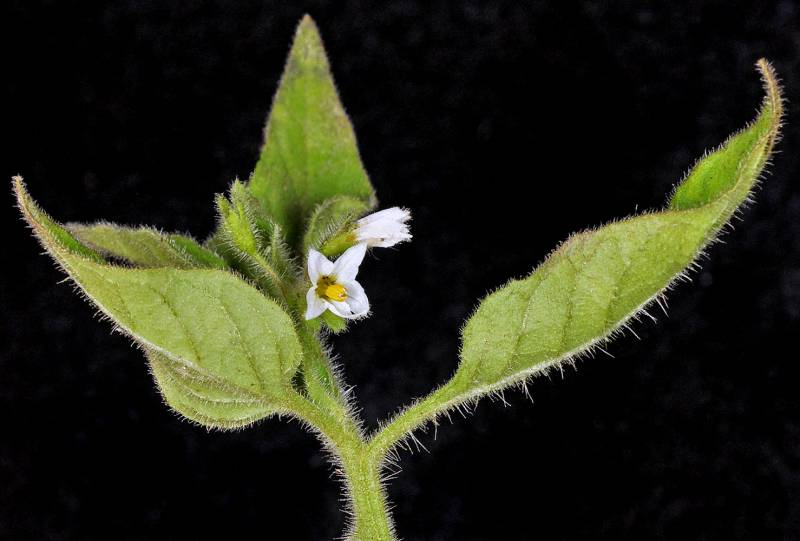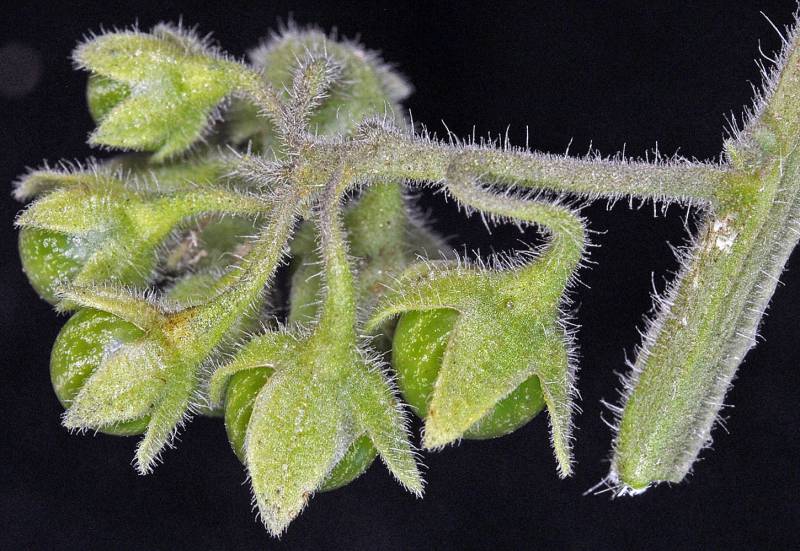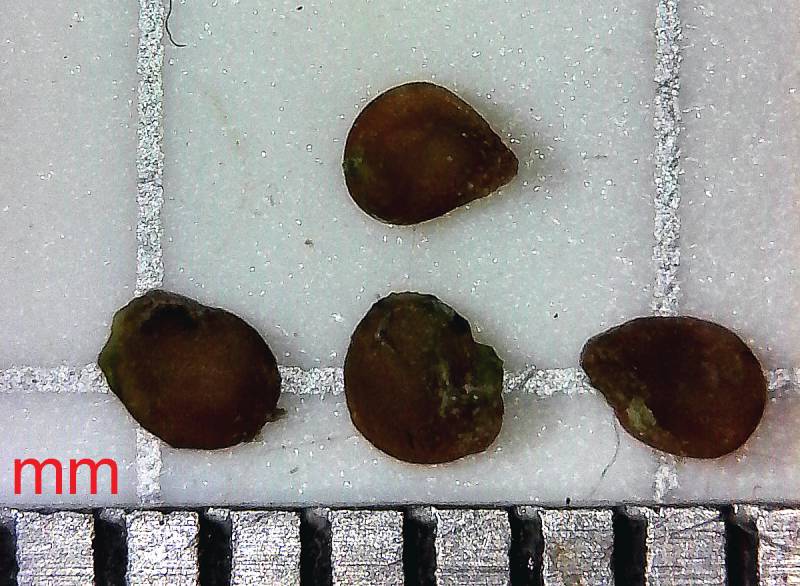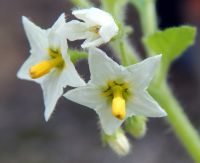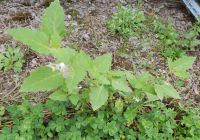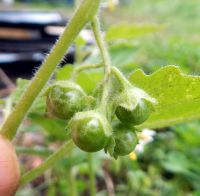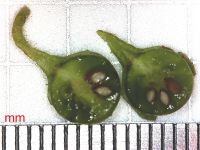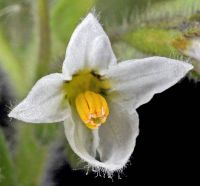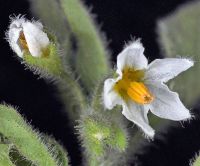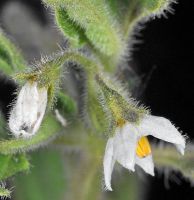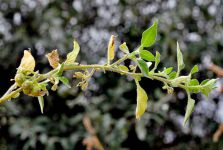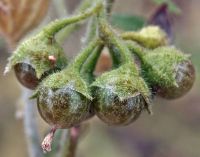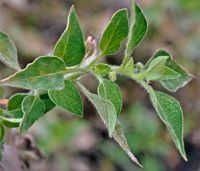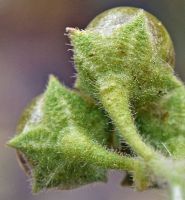Distribution: Occurring on both sides of the Cascades crest in Washington; Alaska to California, east across most of North America to the Atlantic Coast.
Habitat: Fields, roadsides and other disturbed sites, usually on moist soil.
Flowers: May-October
Origin: Introduced from South America
Growth Duration: Annual
Conservation Status: Not of concern
Pollination: Bumblebees, bees, flies
Tap-rooted annual, the branching stem 1.5-6 dm. tall, covered with soft, spreading, sticky, flattened hairs, often glandular.
Leaves petiolate, the blade ovate to deltoid, 2-8 cm. long and 1-5.5 cm. wide, nearly entire or with a few blunt teeth, prominently hairy on the mid-vein beneath.
Numerous ascending, few-flowered peduncles, 0.5-2.5 cm. long, attached along the stem or opposite the leaves, the pedicels drooping, clustered; calyx 4-6 mm. long, with sticky pubescence, the 5 lobes short, the tube persistent, cupping the fruit; corolla nearly rotate, 5-lobed, white or faintly bluish, 5-10 mm. wide, the lobes reflexed; stamens 5, the anthers conspicuous, yellow; style solitary; ovary superior.
Fruit a yellowish or greenish berry, globose, 8 mm. thick.
Publication: Bot. J. Linn. Soc. 92: 27. 1986.
PNW Herbaria: Specimen records of Solanum physalifolium var. nitidibaccatum in the Consortium of Pacific Northwest Herbaria database
WA Flora Checklist: Solanum physalifolium var. nitidibaccatum checklist entry
OregonFlora: Solanum physalifolium var. nitidibaccatum information
E-Flora BC: Solanum physalifolium var. nitidibaccatum atlas page
CalPhotos: Solanum physalifolium var. nitidibaccatum photos

